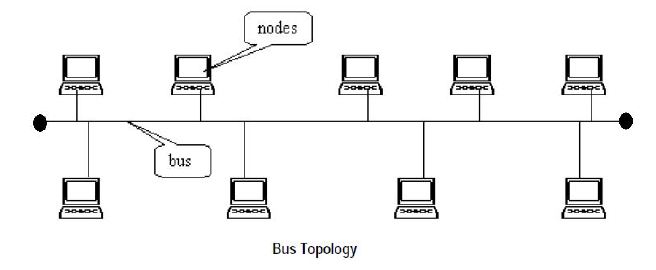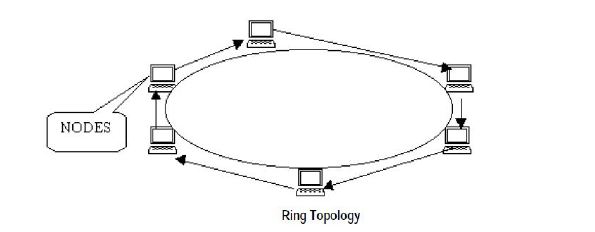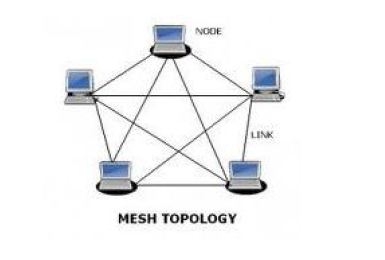Explain Different Types of Network Topologies
The term topology in the context of communication network refers to the way the computers or workstations in the network are linked together. According to the physical arrangements of workstations and nature of work, there are three major types of network topology. They are star
topology, bus topology and ring topology.
1. Star topology:
In star topology a number of workstations (or nodes) are directly linked to a central node. Any communication between stations on a star LAN must pass through the central node. There is bidirectional communication between various nodes. The central node controls all the
activities of the nodes. The advantages of the star topology are:
- It offers flexibility of adding or deleting of workstations from the network.
Breakdown of one station does not affect any other device on the network. - The major disadvantage of star topology is that failure of the central node disables communication throughout the whole network.
You May Also Like
Different Input and Output Devices
2. Bus Topology:
In bus topology all workstations are connected to a single communication line called bus. In this type of network topology there is no central node as in star topology. Transmission from any station travels the length of the bus in both directions and can be received by all workstations.
The advantage of the bus topology is that it is quite easy to set up. If one station of the topology fails it does not affect the entire system. The disadvantage of bus topology is that any break in the bus is difficult to identify.
3. Ring topology:
In ring topology each station is attached nearby stations on a point to point basis so that the entire system is in the form of a ring. In this topology data is transmitted in one direction only. Thus the data packets circulate along the ring in either clockwise or anticlockwise direction.
The advantage of this topology is that any signal transmitted on the network passes through all the LAN stations.
The disadvantage of ring network is that the breakdown of any one station on the ring can disable the entire system.
4. Mesh topology:
The mesh topology is the least-used network topology and the most expensive to implement in a mesh environment, a cable runs from every computer to every other computer. If you have 4 computers, you must have six cables— three coming from each computer to the other computers. The big advantage to this arrangement is that data can never fail to be delivered; if one connection goes down, there are other ways to route.
You May Also Like
Advantages of Computer Networks
Advantages and Disadvantages of E-mail
Back To Fundamentals of Information Technology Questions





